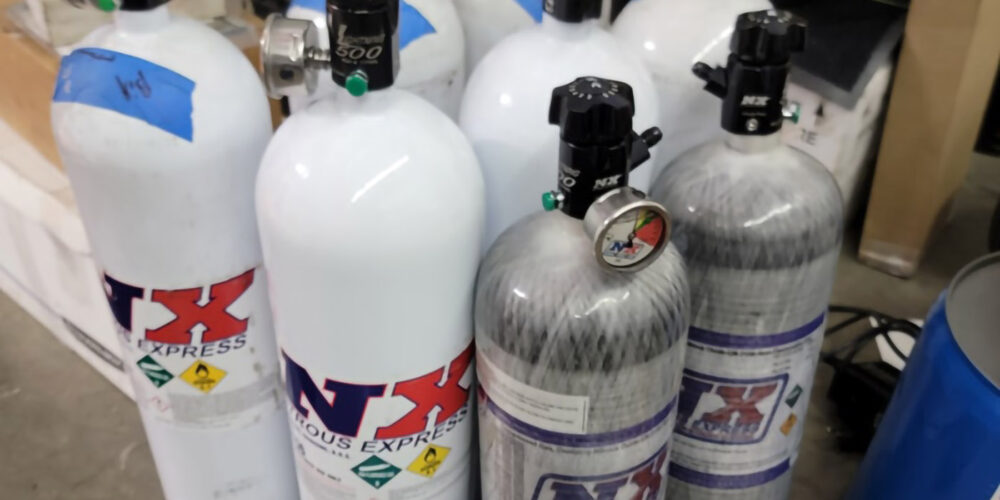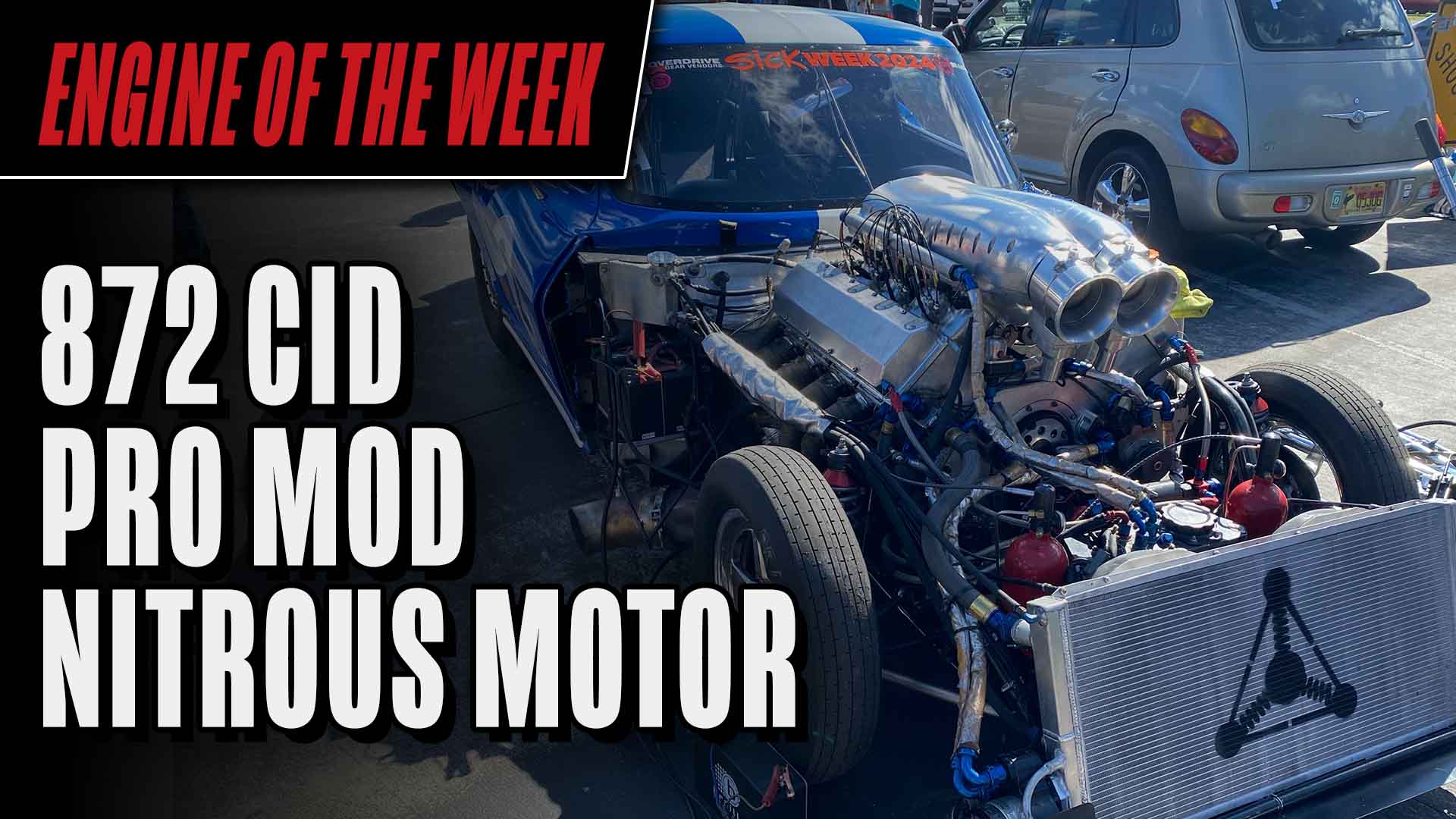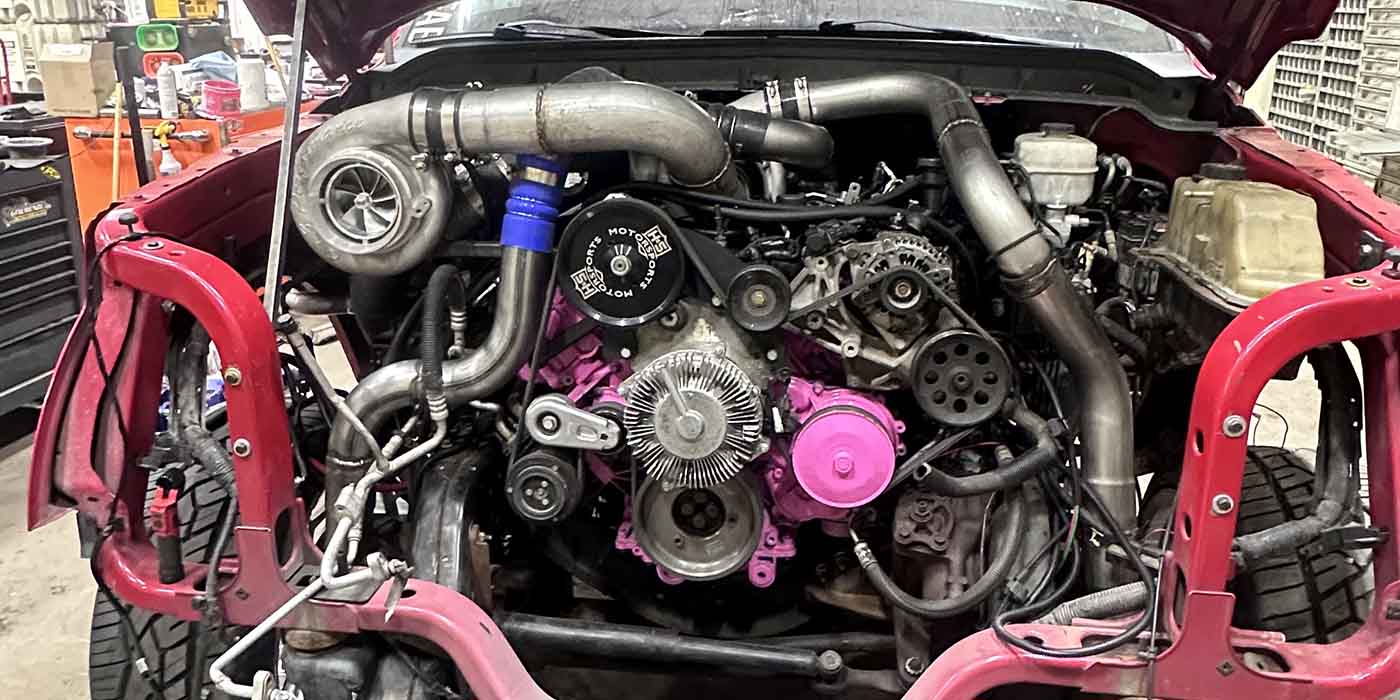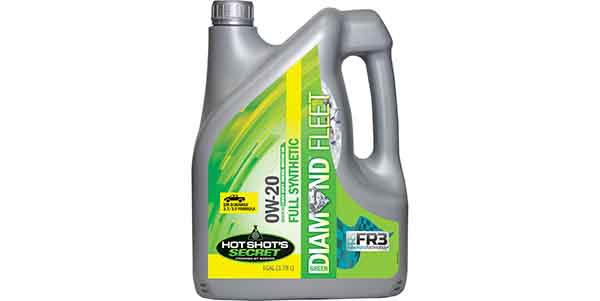Throughout the 1960s, ‘70s, ‘80s, and into the ‘90s, the development of off-road diesel engine technology progressed gradually, resulting in an increase in power density and a gradual reduction in weight. Throughout this period, there was a consistent trend towards achieving greater power density and smaller engine sizes while maintaining the same level of power output.
The progression of performance diesel technology and development has always lagged behind the traditional gas engine, but today it seems as though the two are closer than ever before. A diesel engine builder or racer from the early 2000s would have their minds blown by how much power the Cummins, Duramax and Powerstrokes engines of today are making.
Most of that is thanks to the better machining techniques and internal engine component knowledge we have today, but another big piece of the pie are power adders.
Nitrous oxide, or N2O, is a chemical compound composed of nitrogen and oxygen. When injected into an engine’s intake system, it releases extra oxygen that combines with the fuel to create a more powerful combustion. This results in a significant increase in horsepower and torque.
The use of nitrous oxide in diesel engines is not a new concept. In fact, it has been used in drag racing for decades. However, it is only in recent years that it has gained widespread popularity in the worlds of diesel truck pulling and drag racing. Now, it seems as if almost everyone in the competitive scene is using it.
Of course, diesel engines operate differently than conventional gasoline engines. While a gasoline engine combines air and fuel before igniting it with a spark plug, a diesel engine compresses only air in its cylinder and injects fuel directly into the cylinder shortly before the piston reaches top dead center. The high compression ratio of a diesel engine results in high cylinder temperatures, which then ignite the fuel spontaneously.
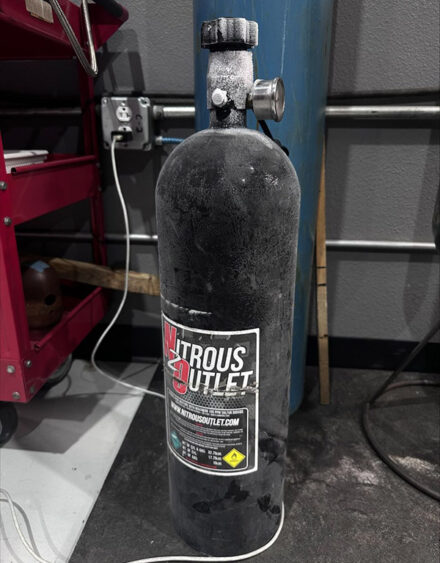
Furthermore, diesel engines do not use a throttle body, so they can take in as much air as the turbo can supply. They also have a broader air/fuel ratio range than gas engines, typically operating between 10:1 and 20:1.
The process of adding nitrous oxide to a diesel engine is relatively simple. A nitrous oxide system consists of a bottle of compressed nitrous oxide, a solenoid valve, and a distribution block that routes the nitrous oxide to the intake manifold. When the system is activated, the solenoid valve opens, allowing the nitrous oxide to flow into the engine’s intake system. The result is an instant increase in power that can be felt immediately.
However, while nitrous oxide injection may seem like a simple and easy way to add more power to a diesel engine, it is important to understand the potential risks and drawbacks of this method.
One of the most significant risks is engine damage. Nitrous oxide injection can cause extreme heat and pressure in the combustion chamber, which can lead to engine failure if not properly managed.
Most diesel engine builders go into their builds with the foresight that a racer/puller will be running a nitrous setup, and specifically tailor the engine to fit the requirements that might entail. Jared Alderson of Kill Devil Diesel is very familiar with nitrous, as his Poplar Branch, NC-based diesel shop completes a lot of performance builds, most of them on the Powerstroke platform.
“There’s a lot of differences depending on each setup, say, between a compound-turbo setup versus a single turbo with a ton of nitrous,” he says. “Comparing 140 lbs. of boost to a setup making 80 lbs. just with more nitrous, the temperature and pressure and everything is a lot different. Of course, with nitrous you have an extra level of control.”
Again, small amounts of nitrous can be used on stock and low-end performance builds, but generally, nitrous is used to add power to more power. It particularly helps with turbocharged applications.
“Since nitrous is a direct power adder it can help with spool times and can help with the launch depending on the application and how the customer wants to use the system,” says Chris Isbel of Nitrous Express. “The big thing to look at, depending on how much nitrous you are spraying, would be the tune of the vehicle. If you are spraying a very large amount of nitrous, the tune will most likely need to be adjusted. On a smaller shot or a spool jet in most cases, you might not have to adjust anything tune-wise.”
Taking temperature and pressure into consideration is of utmost importance when considering a nitrous setup, as those variables will be drastically higher, especially with how much nitrous is used in today’s drag racing. Racers used to run small .050, .060. or .070 jets, now it’s not uncommon to see guys going through 5 lbs. of nitrous per pass, sometimes approaching 1,000 horsepower per pass.
With numbers like those, we have to be thankful for the guys over at S&S, Bosch and MoTeC for providing engine control solutions that have helped to put limiters and safety nets out there to keep engine parts alive.
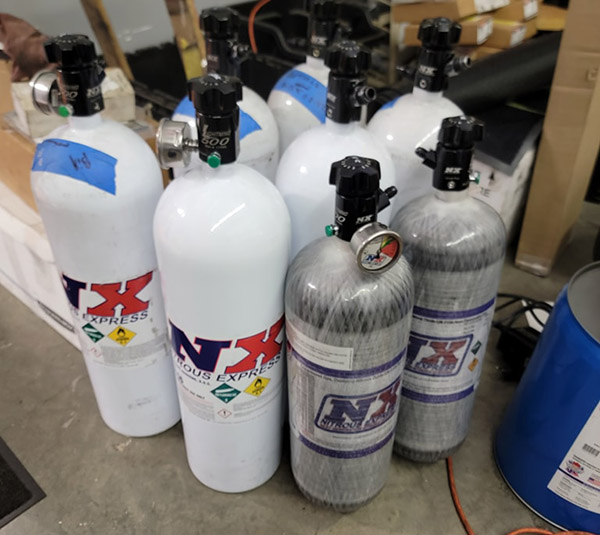
“There’s a lot of things on the component level you can do to keep things efficient and safe with nitrous too,” Alderson says. “We match the camshaft to the rpm range that the engine is going to be operating in, which is usually dictated by the turbo. Then, the valve and seat material can be upgraded too for that heat reduction – we’d go to an Inconel valve and either a ductile or a copper-nickel valve seat. Then, for the higher competition stuff, we’ll do a forged piston and bring the compression from 18:1 down to 14:1-16:1 just to help the combination live better.”
To mitigate these risks, it is important to have a properly designed and installed nitrous oxide system, along with a thorough understanding of how to use it safely. This includes monitoring engine parameters such as air/fuel ratio, exhaust gas temperature and cylinder pressure, as well as ensuring the system is not used excessively.
The first step in adding nitrous oxide to a diesel engine is to select the appropriate hardware and components for the job. This includes choosing a high-quality solenoid valve, distribution block and bottle, as well as selecting the correct size and number of nitrous oxide jets. It is also important to ensure that the fuel system is capable of delivering sufficient fuel to meet the increased demands of the engine.
Companies like Nitrous Express make it easy for builders to get complete nitrous systems that are ready to be installed out of the box. NXD1000 systems cool the exhaust and intake temperatures while boosting horsepower and torque by mounting the solenoid directly on the charge pipe.
Included in a Nitrous Express diesel system are a 15300L nitrous solenoid, 6AN high-flow braided stainless lines, a wide-open throttle switch, a master arming switch, a relay and relay harness, brackets, a 15-lb. nitrous bottle with the Lightning 500 valve, and the Maximizer 5 Progressive Nitrous Controller.
The Maximizer nitrous controller is one of, if not the most popular controller in the nitrous scene. It allows you to apply nitrous flow through either boost pressure, rpm, time, mph, or throttle percentage progression.
Most racers in the competition scene today use the Maximizer 5 to ramp in their nitrous over a setup amount of time, rather than one single large hit of nitrous that might shock the engine and cause damage due to the added horsepower. Pulsing the solenoids and changing the ramp rate has become the way to go.
The vast majority of nitrous progressive controllers used in racing rely on Pulse Width Modulation (PWM) to electrically control the flow of nitrous oxide and fuel solenoids. These controllers have two settings that determine the electrical pulses to the solenoids. The first setting is called Pulse Frequency, measured in cycles per second or hertz, which controls how frequently the unit turns the outputs on. Increasing the hertz setting means the controller fires the solenoid more often per second, resulting in a smoother nitrous output to the engine.
Proper installation and tuning of a nitrous oxide system can yield significant gains in engine performance. However, it is important to approach this method with caution and respect for the potential risks involved. Careful attention to detail and diligent monitoring of engine parameters are essential for safe and effective use of nitrous oxide injection in performance diesel engines. EB

